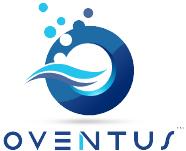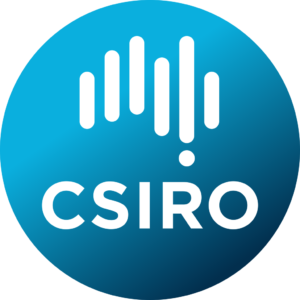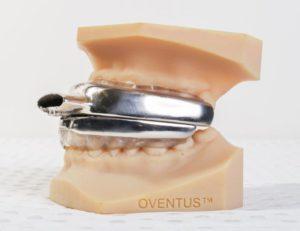3D Printed Sleep Apnea Device Manufacturer Oventus Medical Debuts on Australian Securities Exchange with the Help of CSIRO
 Sleep apnea is perhaps one of the most common sleep disorders and many of those suffering from the condition probably have no idea that they have it. It is estimated that almost 10% of women and up to 25% of men are affected by sleep apnea, however as many as 80% of those cases are completely undiagnosed. And while obesity is a common risk factor, the reality is that anyone can get it, and because its symptoms are related to fatigue, which present as dozens of side effects, it often isn’t even considered as a possibility. One of the most common treatments for sleep apnea is the use of a PAP therapy and the use of a CPAP machine with a breathing mask that prevents the patient’s air passage from being blocked during sleep.
Sleep apnea is perhaps one of the most common sleep disorders and many of those suffering from the condition probably have no idea that they have it. It is estimated that almost 10% of women and up to 25% of men are affected by sleep apnea, however as many as 80% of those cases are completely undiagnosed. And while obesity is a common risk factor, the reality is that anyone can get it, and because its symptoms are related to fatigue, which present as dozens of side effects, it often isn’t even considered as a possibility. One of the most common treatments for sleep apnea is the use of a PAP therapy and the use of a CPAP machine with a breathing mask that prevents the patient’s air passage from being blocked during sleep.
If you’ve ever had to wear a breaking mask of any kind, then you’ll know that they tend to not be on the comfortable side. This is because they are mass produced and made for the average users, so they’re not always going to fit everyone. They can cause sores around the nose, or not seal tightly around the face, reducing their effectiveness. 3D scanning and 3D printing technology has already provided a few solutions to this problem, but a Brisbane-based startup called Oventus developed a customizable titanium mouth device called the O2Vent that helps the patient breathe without obstruction, and for some patients eliminates the need for a CPAP machine entirely.
 Oventus began developing the O2Vent back in 2015 when founder Dr. Chris Hart approached Australia’s Commonwealth Scientific and Industrial Research Organisation (CSIRO) for their help developing the device. Hart envisioned the O2Vent as an oral device that would be custom made and 3D printed based on each individual patient’s mouth. The device would have an airway built into it that would send air to the back of the patient’s mouth, which would bypass any obstructions caused by the nose, soft palate or tongue.
Oventus began developing the O2Vent back in 2015 when founder Dr. Chris Hart approached Australia’s Commonwealth Scientific and Industrial Research Organisation (CSIRO) for their help developing the device. Hart envisioned the O2Vent as an oral device that would be custom made and 3D printed based on each individual patient’s mouth. The device would have an airway built into it that would send air to the back of the patient’s mouth, which would bypass any obstructions caused by the nose, soft palate or tongue.
“Using CAD software to create a 3D drawing of the patient’s mouth and bite, Oventus then uses 3D printing technology to manufacture a custom-made medical-grade mouthguard from titanium,” the company describes.
As Australia’s government agency for scientific research, CSIRO often works closely with businesses and startups looking to use advanced technology to develop and manufacture new and innovative products. The first prototype for the O2Vent was 3D printed in titanium at CSIRO’s Lab 22 Innovation Centre located in Victoria using an Arcam metal 3D printer. As one of Australia’s leading facilities for metal additive manufacturing, Lab 22 has helped develop several world-first medical breakthroughs, including 3D printed prosthetic devices for patients all over Australia and in Europe. CSIRO’s help and access to Lab 22 was invaluable to the development and production of the O2Vent device.

The O2Vent device fits in the mouth and delivers air to the back of the throat by channeling it through the vent.
“Oventus is a company with a unique oral mouthguard device that can help people globally who suffer from obstructive sleep apnoea and snoring,” said Chairman Drc Mel Bridges. “I’m proud to be part of this company and our leadership team, who are all experienced in the commercialisation and global roll out of medical devices, as it starts out on a new phase of growth as an ASX listed company.”
Here is an explanation of how the O2Vent (previously called Clearway) device works:
This week thanks to the involvement of CSIRO, Oventus Medical was just listed on the Australian Securities Exchange. The newly public company was able to raise more than $12 million AUS ($9 million USD) in its initial public offering, which the company plans to reinvest into the commercialization and global distribution of their O2Vent sleep apnea device. Just this April Oventus was able to secure the approval of the FDA, so the O2Vent can now be sold in the US and the $50 billion global sleep disorder market. Currently it is estimated that 37 million Americans suffer from problems caused by snoring and sleep apnea, and Oventus hopes that their device will disrupt the multi-billion-dollar market. Let’s discuss further over in the Oventus Medical & 3D Printed Sleep Apnea Prototypes forum at 3DPB.com.
Subscribe to Our Email Newsletter
Stay up-to-date on all the latest news from the 3D printing industry and receive information and offers from third party vendors.
You May Also Like
Further Understanding of 3D Printing Design at ADDITIV Design World
ADDITIV is back once again! This time, the virtual platform for additive manufacturing will be holding the first-ever edition of ADDITIV Design World on May 23rd from 9:00 AM –...
3D Printer Maker EVO-tech Reborn as NEVO3D — Once More With Feeling
EVO-tech was a 3D printing service and original equipment manufacturer established in 2013 and based in Schörfling am Attersee, Austria. The company produced high-quality material extrusion systems featuring linear bearings,...
3D Systems Brings 3D Printed PEEK Cranial Implant to the U.S. with FDA Clearance
For more than 10 years, 3D Systems (NYSE:DDD) has worked hand-in-hand with surgeons to plan over 150,000 patient-specific cases, and develop more than two million instruments and implants from its...
CDFAM Returns to Berlin for Second Annual Symposium
The second CDFAM Computational Design Symposium is scheduled for May 7-8, 2024, in Berlin, and will convene leading experts in computational design across all scales. Building upon the first event...
































